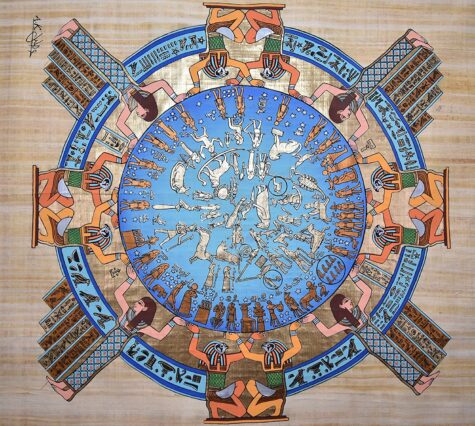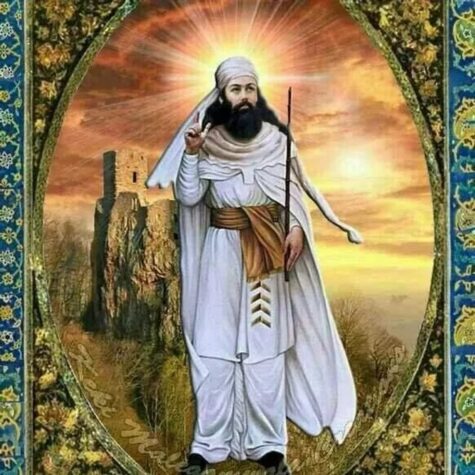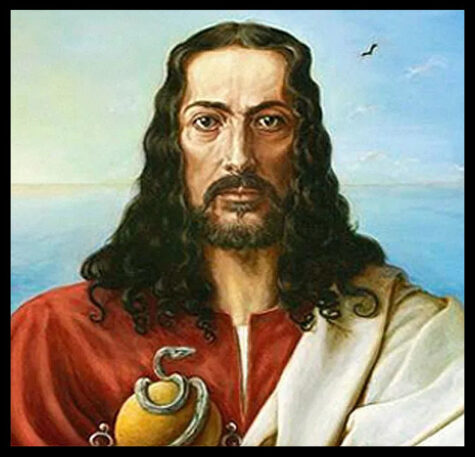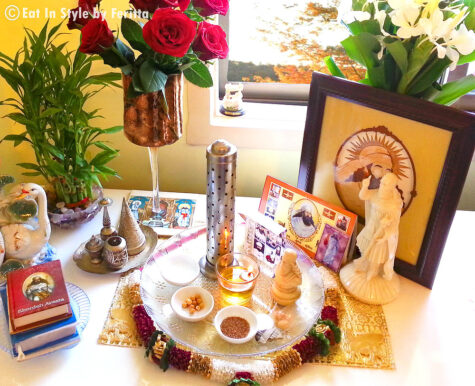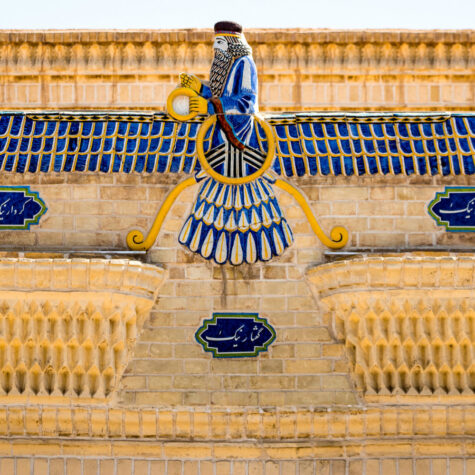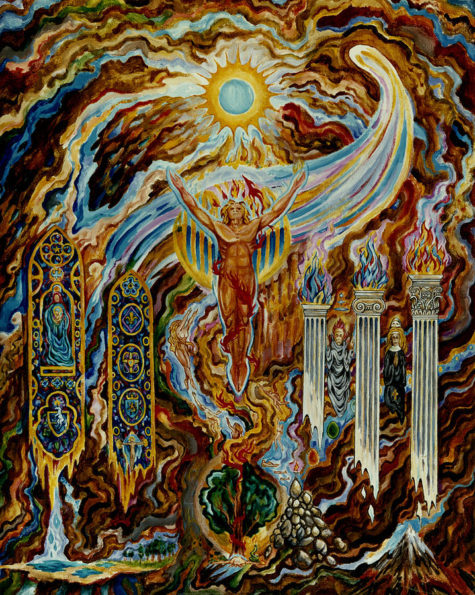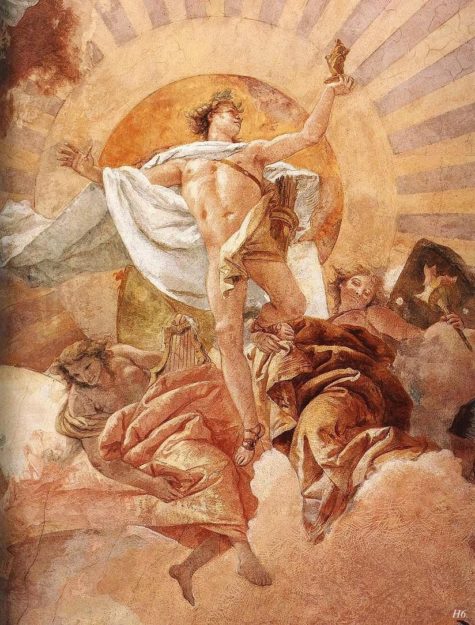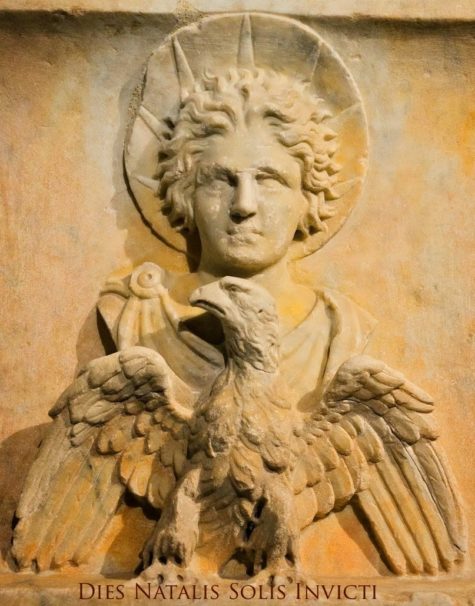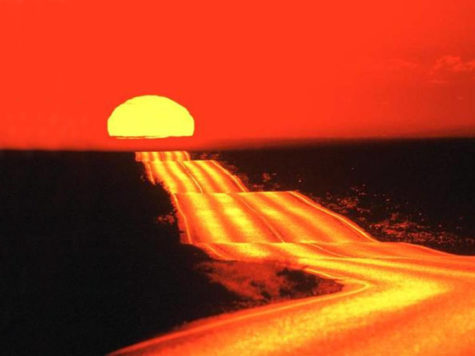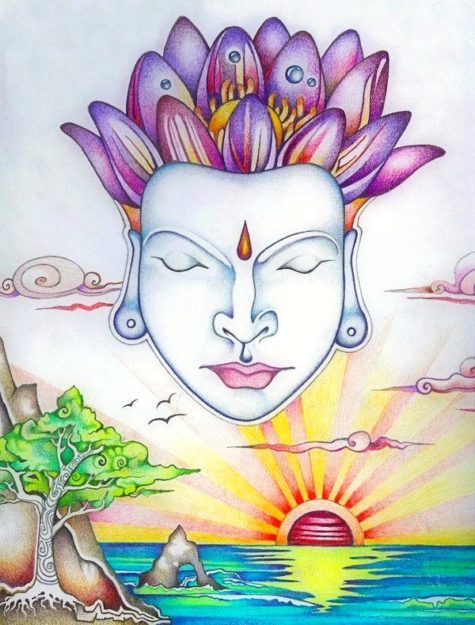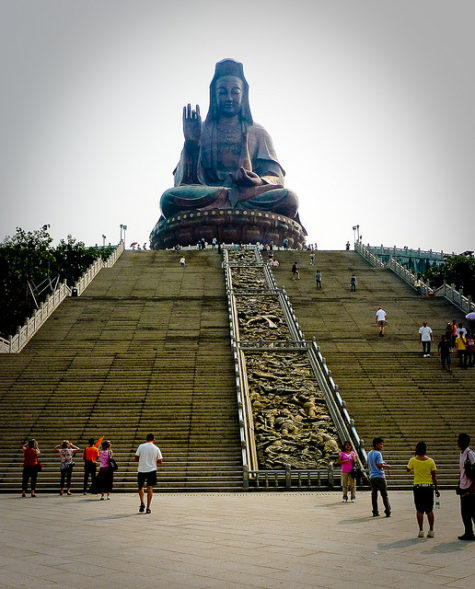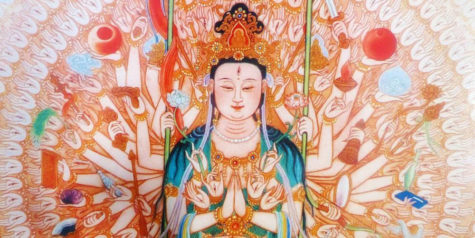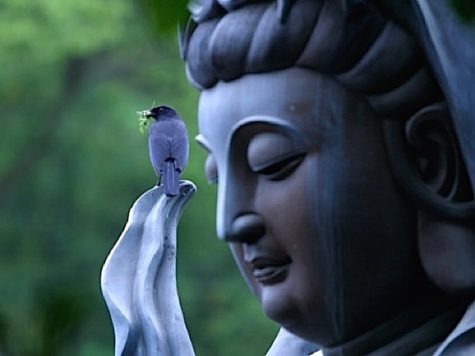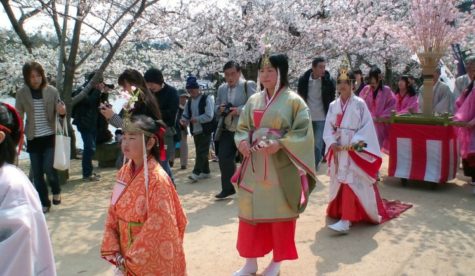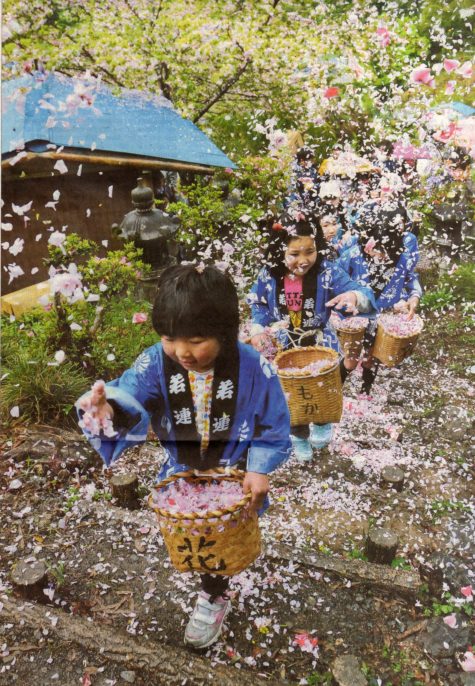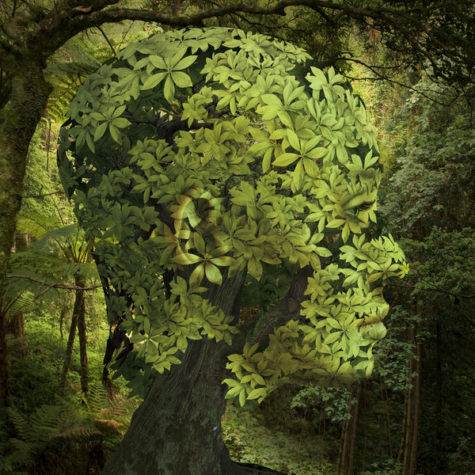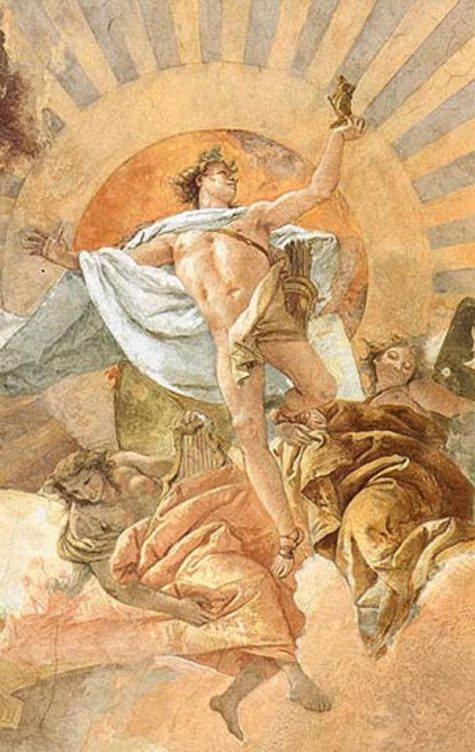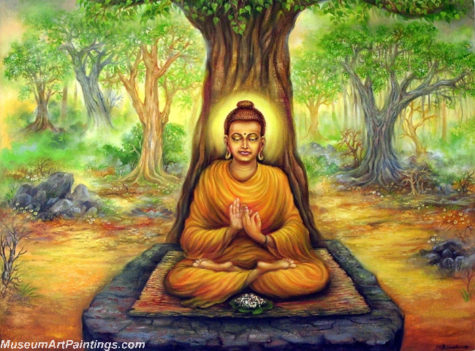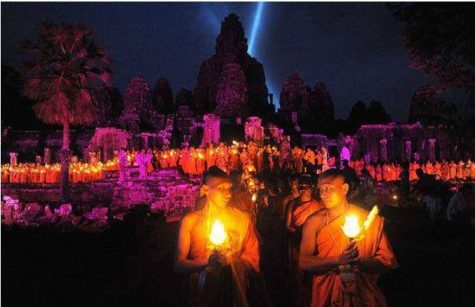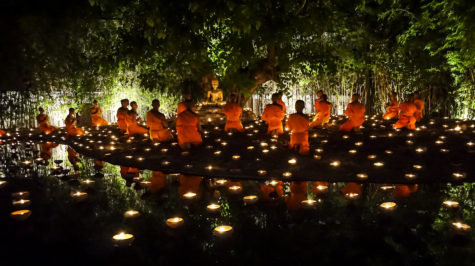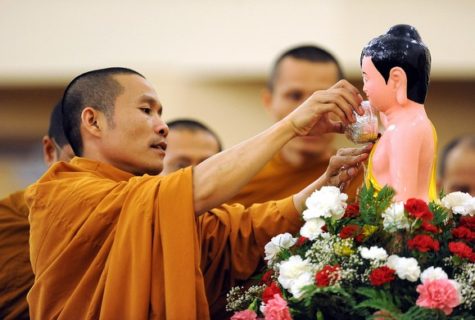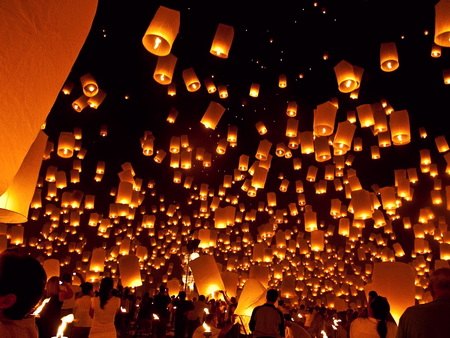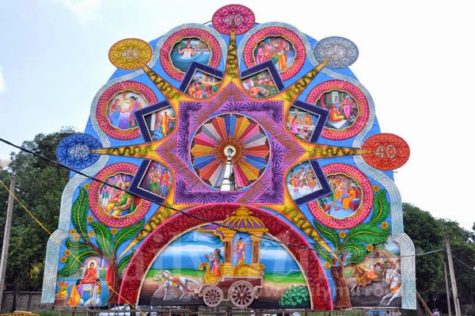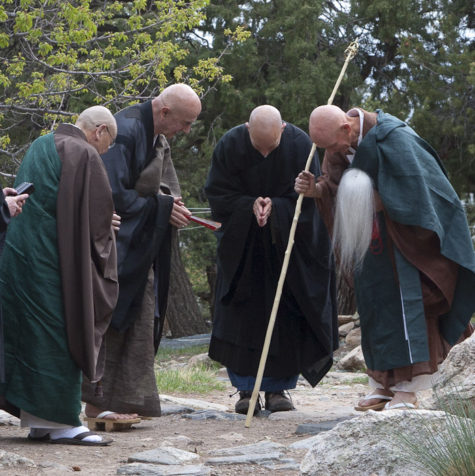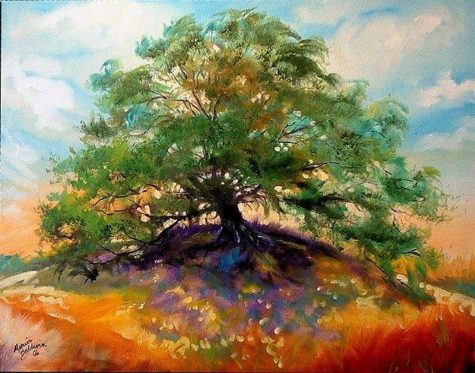Birthdays
The 5 Epagomenal Days (6 during leap years) were inserted into the Egyptian Calendar which had been 360 days long. These days were reserved as birthdays for the gods. The first, third, and fifth of these days were considered unlucky by the Egyptians.
The legend behind the days holds the Nut had been forbidden to have children on any day of the year by her husband Geb. Thoth, upon hearing this, gambled with the moon-god for a fraction of his light. Thoth won and he created the additional 5 days for Nut so she could bear children on these days “not of the year.”
They are as follows:
- July 27 – 1st Epagomenal Day – Birthday of Osiris
- July 28 – 2nd Epagomenal Day – Birthday of Horus
- July 29 – 3rd Epagomenal Day – Birthday of Set
- July 30 – 4th Epagomenal Day – Birthday of Isis
- July 31 – 5th Epagomenal Day – Birthday of Nephthys
Note:
These dates come from Traci de Regulla in The Mysteries of Isis. She took her dating from Dr. Robert Brier’s Ancient Egyptian Magic. There is a great deal of dispute when it comes to calculating the dates of Egyptian festivals due to problems in their calendar system (it was only 360 days for some period of time).
The Birthday of Zarathushtra, one of the most important Zoroastrian festivals. Regarded as one of the most significant festivals of the Parsis, it is also referred to as Navroz-I-Khas. Although the actual date of his birth cannot be accurately identified, the festival of Khordad Sal symbolically celebrates the birthday of Prophet Zarathushtraz on the 6th day of the first Parsi month, Farvardin.
This date, however, falls on different days depending upon which of the three religious calendars are followed, and on those dates will vary from year to year, here are the dates for 2021:
- Fasli (Iranian): March 26
- Qadimi (Kadmi): July 22
- Shenshai: August 21
Who is Zoroaster?
Zoroaster, also known as Zarathustra, was the founder of Zoroastrianism. Some accounts place his birth in western Iran, perhaps near Tehran, however based on the dialect of his poetry, it seems likely that he was born in the east. He is credited with the authorship of the Yasna Haptanghaiti as well as the Gathas, hymns which are at the liturgical core of Zoroastrianism.
There is no consensus among scholars about when he was born. The estimated dates of his birth range from 6000 BC to 100 BC. The majority of his life is known only through the Avestan texts. It is possible that Zoroaster was a purely mythological person or that the writings attributed to him are actually the work of multiple authors who wrote under the same name. All of the details have been lost in antiquity.
Legend says that when his mother was five months pregnant, she had a nightmare about the ending of the world. But then an angel appeared to her, and told her that her unborn child would become a great prophet who would be able to reverse the impending destruction.
It is said that his face was shining at the moment of his birth, and that it is on account of this that he was named Zarathustra, which according to one translation means ‘golden (zara) light (ushas)’; according to another it means ‘yellow (zara) camel (ushtra)’, a translation perhaps more in keeping with the pastoral society into which he was born.
Celebrating The Day
Khordad Sal is the equivalent of Christmas for Christians, and it is a day of great festivities and celebrations.
Khordad means perfection, and it is customary on this day to visit the Fire Temple to give thanks to Ahura Mazda, the Persian name for the one God, for giving humanity the ideal gift of the Prophet Zarathushtra. His followers participate in a jashan or thanksgiving ceremony; listen to stories of his miraculous birth and life; and then celebrate with a lavish community meal, a drink and a dance.
On this day people get busy with cleaning their homes and decorating them with rangoli, colored sand spread on the floor in different patterns. Fragrant flowers are used for further beautifying the homes. People get up early on the day of the festival and don their newest and finest clothes. They prepare traditional foods as part of the luxurious dinner that forms a major part of the celebrations.
The tables are decorated in a special fashion as part of the festivities. Foods and flowers are the main highlights at the table. They are accompanied by dishes of nuts and candies. The different delicacies prepared include kebab, chelo, fish and seasonal fruits, such as melons, nectarines and apples.
The Parsis also visit fire temples or places of worship to offer thanks to Ahura Mazda and remember the birth of their prophet. A special ritual followed is Jashan, or thanksgiving prayers to give thanks for and celebrate the soul that evinced a philosophy of life that is both giving and fulfilling, which is performed in the agiaries. A grand feast follows this ritual in the temples.
Because this is a time to unite and mingle with near and dear ones, Khordad Sal gives the Parsis an opportunity for togetherness and to make resolutions for the upcoming year ahead. People exchange gifts and salute each other with the greeting: Khordad Sal Mubarak!. Prayers are offered and are followed by festive parties
Typically a day for family gatherings, however, if families are unable to be together then prayers are offered for those who are not in attendance. It is an important celebration for the Parsi community, and because family (and community) is central to the themes of Zoroastrianism, guests are invited to participate in the festivities.
Parsis also take the time during Khordad Sal to be introspective. They look at ways in which they can improve the lives of others and themselves.
About The Zoroastrian Faith
Zoroastrianism, also commonly known as Mazdaism is one of the oldest monotheistic religions in the history of humanity. Very little is known about it. The religion is pillared on the belief in the existence of heaven and hell, the Golden Rule (do unto others what you want to be done unto you), messianism and free will.
Zoroastrianism was for ages the world’s most powerful religion, termed by some as ‘The Supreme Religion.’ The 7th century saw a rise in the suppression of the religion. The suppression was a result of the victory by the Muslims in conquering the state of Persia. The Zoroastrian faith has endured many hardships, the most significant being the invasion into Iran by Alexander and later, the Arab conquest of Iran.
The three tenets of the religion include good thoughts, good deeds, and good words. Zoroastrianism believes there is only one supreme, universal and transcendent God, the Ahura Mazda, “Wise Lord.” They believe that Ahura Mazda discovered the world and then passed on all the teachings through the Prophet Zoroaster.
Though greatly diminished in numbers, Zarathustra’s followers have continued to honor his revolutionary teachings for over 3000 years. Most modern Zoroastrians live in India, although smaller communities exist around the world.
As Zoroastrian numbers continue to dwindle, courts battle ancient rules in the 21st century. Tradition forbids women who marry non-Parsi Zoroastrians from ever again entering fire temples, and as more and more followers enter interfaith marriages, leaders question the religion’s ability to continue in the world.
Sources:
The Sun will “die” at midnight on December 21, but don’t panic, it will “rebirth” on midnight December 24. This occurs at the beginning of Winter every year for the past 4.6 billion years. It is called the Winter Solstice, “sun stood still”, and is considered the shortest day in the year in terms of hours of sunlight.
It is a three-day period when the hours of daylight are at its shortest and the hours of night (darkness) are at its longest. Noticeably, the sun progressively sets earlier each evening after June 22 (The Summer Solstice – longest hours of sunlight) and night fall comes the earliest on December 21. Hence daylight savings time put our clock one hour back to make up for the shorter hours of day light.
Needless to say, the Sun is vital to our life here on earth and is one of the most important star in our world. It is the nearest star to Earth and is believed to be formed 4.6 billion years ago. It is the most important source of energy for life on Earth and its diameter is about 109 times that of Earth, with mass about 330,000 times that of Earth. The sun accounts for about 99.86% of the total mass of the Solar System and is so large that about 1,300,000 planet Earths can fit inside of it.
Awesome.
WOW.
Worthy of Worshiping?
Sun Worship
Well, our ancestors did just that more than 9000 years ago and it is still being done today. The ancients selected December 21, the Winter Solstice as the ideal time to invoke the sun. Maybe if you were living in the north pole and had long, dark harsh winters to deal with you might want to invoke the sun too.
In the solar myth, the death of the “old sun” occurs as the length of daylight decreases and becomes its lowest at the Winter Solstice which begins on the midnight of December 21 (early morning December 22) and ends on Midnight December 24 (early morning December 25). The sun stop moving south on December 22, it is then at its lowest point in the Northern Hemisphere, residing in the vicinity of the Southern Cross. It stays at this lowest point for three days (December 22, 23, 24 appearing to not moving south or north and was considered “dead”).
It “returns to life” at midnight on December 24/ early morning December 25, when it begins its northern journey again and the hours of sunlight start to lengthen. Therefore, the ancients said that the SUN was born on December 25. As a result, festivals and feasts were done to honor Sol or Mithra.
Interestingly, on December 24, Sirius (star in the east and brightest star in the night sky) aligns with the three brightest Orion belt stars called the Three Kings, (Alnitak, Alnilam and Mintaka) and on December 25, these all point to the location where the sun will rise on earth that day. In essence, the three kings follow the star in the east to find the sunrise (birth of the sun).
Solar deities and Sun worship can be found throughout most of recorded history in various forms, including:
- Ra ~ Egypt,
- Mithra ~ Persia,
- Apollo ~ Rome
- Surya ~ India
- Amaterasu ~ Japan
- Sol ~ Germanic
- Tonatiuh ~ Aztec
- Jesus ~ Christianity
Birthday of the SUN or the SON?
As a Baptist, I grew up with the belief that December 25 is the birthdate of Jesus Christ and as such we worship and acknowledge it as Christmas. Indeed, Christmas is big— very big. The entire Island of Jamaica comes to a virtual standstill. Schools and colleges are closed; businesses shut down to give their employees time off; many families plan trips and get-togethers; Church attendance increase; and gifts are given by even those who were scrooge all year long. Maybe you recall, the Christmas Carol that even erroneously say “ Long time ago in Bethlehem, so the Holy Bible said, Mary’s boy child Jesus Christ, was born on Christmas Day”
However, recall all these activities were already being done in Rome, Babylon, Persia, Greece, and Egypt to acknowledge and worship the birth day of Sol Invicta (the Unconquered Sun) up to 4000 years before Jesus Christ was born. It then begs the question, whose birthday are we celebrating on December 25? Does Jesus the SON share the birthday with the SUN?
How did the birth of the Sun get changed?
According to scriptures, Jesus Christ was whipped, spat upon, publicly dishonored then killed by the Church (Caiaphas the high priest) and the State (Pilate the Roman governor). After Jesus’s death, his followers had to go “underground” as they too were meeting the same or worse fate than Christ. These “Followers of Christ” (not Christians as Christianity wasn’t start as yet) were stripped and flogged with whips, stoned to death, and persecuted.
Yet, despite the persecution, the “Followers of Jesus” went underground and their church started to flourish and soon became a major concern to the Roman government. They were blamed for spreading “mischief” that Jesus Christ was king and lord, and was crucified to save our souls. Followers of Christ were also accused of destabilizing the economy and threatening civil war.
To stop the possibility of civil war and at the same time keep the existing pagan occult worshipers, Constantine, in AD 326 at the Council of Nicaea, “married” Christ like sentiments (name and life story) with that of Rome’s mysticism and called it Christianity. This new “Christianity” became the official religion of Rome and the SUN was replaced by the SON with Isis and Osiris became Mary and Jesus. December 25 was then decreed as Jesus birthday with the Spring Equinox full moon in March/April designated as his death day.
In short, today’s Christianity is an unholy marriage of Roman Idolatry and Christ sentiments designed by Constantine to maintain religious and political if not economical order and harmony in the empire.
Sol Invictus (Unconquered Sun) is a very important star in our solar system without a doubt. As the main source of energy, we can understand the need to recognize it and maybe even glorify its daily presence in our lives. Many people deliberately and some unwittingly worship and glorify the SUN between December 21 – 25 to show appreciation.
If you are interested, a Ritual to Bring The Sun can be found in the Book of Shadows, and a number of invocations, prayers, and poetry specifically dedicated to the Sun can be found at Widdershins.
Honoring The Sun Every Day
One really great way to honor the Sun (and yourself) is with a series of body positions called Sun Salutations. An excellent time to begin this ritual is on the morning of the Winter Solstice just as the sun is rising, (facing east). If a sunrise Sun Salutation isn’t possible, but you want to include this in your morning routine, pick a time before breakfast, and that will be fine.
The Sun Salutation, (Surya Namaskar), is a series of 12 yoga postures performed in a single, graceful flow. Each movement is coordinated with the breath. Inhale as you extend or stretch, and exhale as you fold or contract. The Sun Salutation builds strength and increases flexibility. Different styles of yoga perform the Sun Salutation with their own variations. However, the flow presented below covers core steps used in most styles.
For the series below, a single round consists of two complete sequences: one for the right side of the body and the other for the left.
Sun Salutations
Even on days when you think you have no time for yoga, try and do at least one or two rounds of the Sun Salutation. You’ll feel the difference.
 1. Mountain:
1. Mountain:
Begin by standing in Mountain pose, feet about hip width apart, hands either by your sides or in prayer position. Take several deep breaths.
 2. Hands up:
2. Hands up:
On your next inhale, in one sweeping movement, raise your arms up overhead and gently arch back as far as feels comfortable and safe.
 3. Head to knees:
3. Head to knees:
As you exhale, bend forward, bending the knees if necessary, and bring your hands to rest beside your feet.
 4. Lunge:
4. Lunge:
Inhale and step the right leg back.
 5. Plank
5. Plank
Exhale and step the left leg back into plank position. Hold the position and inhale.
 6. Stick
6. Stick
Exhale and lower yourself as if coming down from a pushup. Only your hands and feet should touch the floor.
 7. Upward Dog
7. Upward Dog
Inhale and stretch forward and up, bending at the waist. Use your arms to lift your torso, but only bend back as far as feels comfortable and safe. Lift your legs up so that only the tops of your feet and your hands touch the floor. It’s okay to keep your arms bent at the elbow.
 8. Downward dog
8. Downward dog
Exhale, lift from the hips and push back and up.
 9. Lunge
9. Lunge
Inhale and step the right foot forward.
 10. Head to knees
10. Head to knees
Exhale, bring the left foot forward and step into head-to-knee position.
 11. Hands up
11. Hands up
Inhale and rise slowly while keeping arms extended .
 12. Mountain
12. Mountain
Exhale, and in a slow, sweeping motion, lower your arms to the sides. End by bringing your hands up into prayer position. Repeat the sequence, stepping with the left leg.
Put it all together, and it looks like this:
If the stick figures are not quite “doing” it for you, here’s a video:
Source: Notclif
Quan Yin’s Birthday is commonly celebrated on the 19th day of the 2nd lunar month. In 2018 this falls on April 4, but in 2021 it lands on March 26, so you can see the dates vary widely from year to year. The birthday of the Goddess of Mercy is a celebration of the Bodhisattva (“Buddha-to-be”) of infinite compassion and mercy.
Alternate spellings include:
- Kwan Yin
- Kuanyin
- Kuan Yin
- Guanyin
One of the deities most frequently seen on altars in China’s temples is Quan Yin. Quan Yin, the Buddhist Heart of Mercy and Queen of Compassion, is no forgotten deity but among the most popular on Earth today. The most beloved of Buddhist deities, he or she is accepted not only by Buddhists but also by Japanese, Chinese, and Koreans.
On her birthday, young men and women come together and burn joss sticks and worship the goddess either in temple halls or court areas. Some devotees also offer oil for the lamp of Guan Yin. This is an offering meant for peace and health.
Common dishes served on this day include porridge, fried koey teow and noodles, which stays true to authentic Chinese cuisine. All dishes served at the festivities are typically vegetarian as well.
Quan Yin is the Bodhisattva of Compassion. In Sanskrit, her name is Padma-pâni, or “Born of the Lotus.” Quan Yin, alone among Buddhist gods, is loved rather than feared, and is the model of Chinese beauty.
She is a tireless, ever-vigilant protective guardian. Although her appearance is milder than that of a warrior spirit, she is no less powerful. Kwan Yin achieved nirvana but refused to leave Earth as long as any person still suffers. Kwan Yin vows that if you call her name in times of anguish, she will come and assist you.
There are three different dates celebrated as her birthdays; when she was born, when she achieved enlightenment and when she became a nun.
Guan Yin is known as Bodhisattva of the infinite concern in East Asian Buddhism. It is believed that Guan Yin can take different forms to help others. Therefore, she can be represented by either having a female or male body.
Goddess of Mercy was first described in the Lotus Sutra in the 5th century by Gautama Buddha. She was originally born a xian (holy spirit) reincarnated as a Human to help mankind.
It was told that she had the power to assume whatever form, whenever necessary to alleviate suffering, and to convey sympathy and compassion. She became a saint after her death, and was given the name of Guan Yin by her worshipers. It is said that anyone praying to the Goddess of Mercy would be cured of all illnesses.
This deity has been depicted as both masculine and feminine and sometimes as transcending sexual identity (with soft body contours but also a moustache).
The Lotus Sutra, or scripture, says Avalokitesvara (the deity’s Sanskrit name, meaning “the lord who looks in every direction”) is able to assume whatever form is needed to relieve suffering. He/she exemplifies the compassion of the enlightened and is known in Tibet as Spyan-ras gzigs, “with a pitying look.”
Kuan Yin, the Chinese name, means “regarder of sounds,” or “of the voices of the suffering.” The Japanese word for the deity is pronounced “Kannon.”
Women especially celebrate Kuan Yin. In Malaysia, hundreds of devotees bearing joss sticks, fresh fruit, flowers, and sweet cakes gather twice a year at temples dedicated to Kuan Yin in Kuala Lumpur and Penang to pray for her benevolence. (She is feminine there and in China, Korea, and Japan.)
At the old temple at Jalan Pitt, Penang, puppet shows are staged in celebration of her. In Hong Kong, Kuan Yin is honored on the 19th day of the sixth lunar month at Pak Sha Wan in Hebe Haven.
Information collected from various sources.
Hana-Matsuri refers to the memorial service performed at temples throughout Japan to celebrate the birth of Buddha on April 8th. It is formally called Kanbutsue. On this day, small buildings decorated with flowers are made at temples and a tanjobustu (baby Buddha figurine) is placed inside. This figurine is sprinkled by worshipers using a ladle with ama-cha, which is a beverage made by soaking tea leaves in hot water Some people take this ama-cha home and drink it as holy water.
Shakyamuni Buddha was born approximately 2,500 years ago under the Bodhi tree in the garden of Lumbini (Nepal) to the Sakya King Suddhodhana and his queen, Maya. When the child was born, flowers bloomed, birds sang and sweet rain fell from the heavens above.
The infant Buddha took seven steps in the four directions and with one hand raised to the sky and the other pointing downwards proclaimed,
“Whether above the sky or below the sky, I am most noble and high. I am here to bring peace to all the sentient beings in the world who are suffering.”
The event is commemorated in Buddhist temples across Japan as the birth anniversary of the Shakyamuni Buddha. The day is celebrated with parades featuring images of the baby Buddha, the white elephant seen by his mother in her dream just before his birth and cherry blossoms carried by children dressed in traditional Japanese clothes.
Coincidentally, the sakura (cherry) trees bloom at this very time, and so are given as offerings to adorn the nativity celebrations and ‘amacha’, sweet tea symbolic of the heavenly rain is poured over the baby Buddha by children.
Source: Journey Mart
According to some pagan calendars, March 8 is designated as the Chinese Birthday of Mother Earth. A Chinese holy day, dedicated to Mother Earth. Here’s a cool meditation I found for today, and for any day when you want to establish a closer connection to the Earth Mother.
BE ONE WITH THE MOTHER
The Real Challenge for Humans at This Time is to be one with the Mother. There are so many Considerations for This, It Bears Deep Reflection. To Which Mother Are We Referring? As well as the Divine Mother, We Mean The Earth Mother. Your Physical Body Form Comes Directly From the Earth Mother Herself. It IS Her Body. All the carbon, nitrogen, oxygen, hydrogen and trace minerals and metals Are Her Bodily Constituents.
She Envelops You While Your Soul Resides in This or Any Physical Form. In This Way You Are Always One With the Mother, Whether You Feel and Know It or not. Why not Feel, Sense, Be the Oneness with The Earth Mother’s Body and Energies?
You Can Feel the Oneness With the Earth Mother In Many Ways.
Let Her Spine (North Pole-Crown to South Pole-Root) BE INSIDE Your Spine. Let Her Elements Be Your Elements and make-up.
Become All the FIVE ELEMENTS.
FEEL All the Element EARTH, with All the Continents, Rock Shelves, Ocean Beds, Topsoil INSIDE Your Physical Body.
BE the Element FIRE by FEELING the Flow of Hot Lava Inside Your Spine, Your Stomach, Digestive Systems and Internal Organs Especially Liver, Kidneys, Gall Bladder, Spleen. Feel the Golden, Spiritual Lava flowing through Your Heart Out to the Universe.
BE the Element WATER, so that All the Oceans, Lakes and Rivers of the World are Flowing in Your Arteries, Veins, Blood and Energy Meridians. Feel The Fullness of the Tides Moving You.
BE the Element AIR, currents of Hot, Warm, Cool or Cold Air Movements Inside the Lungs and the Energy Meridians Throughout Your Body, as well as on Your Skin.
Be the Element ETHER whereby the Magneto-Electrical Energy Lines and Grid Patterns of Mother Earth Flow Constantly From Crown of Head to Fingers to Toes. This Consistently Heals, Cleanses, Purifies, Re-Orients, Revisions and Intergalactically Expands You As You Take In Cosmic Rays From Source and Important Stars, Galaxies and Nebulae Around the Universes.
Only When You Have Completed the Moment-to-Moment FULLEST Experience of Being One With the Earth Mother will You Feel Safe In Being the Love You Are While In the Physical Form.
Welcome Home!
Found in: Babaji – Mantras Chants Meditations and Messages
Noah Webster, America’s first lexicographer, was born on October 16, 1758. We remember Webster as the author of the first American dictionary, but he was also the first authority to advocate American English. His American Spelling Book, published in 1783 (later known as Webster’s Elementary Spelling Book), was the first to Americanize the spelling of English words such as colour and labour by dropping the u. He also espoused American pronunciation and usage.
In a very real sense, Webster gave us the language that Americans think of as English. An estimated 60 million copies of Webster’s speller were sold during its first hundred years in print. In 1828, Webster’s American Dictionary of the English Language was published, with 12,000 more words and about 40,000 more definitions than any previous English dictionary.
This is an excellent day for divination involving the use of letters, words, or books. Here are a few links to get you started:
- Dictiomancy – divination by randomly opening a dictionary
- Alphabetical divination – divination by random choosing of the letters of the alphabet.
- Literomancy – divination by a letter in a written language
- Notarikon – divination by initials
- Onomancy – divination by letters in a name
Found at: Almanac.com
According to some pagan calendars, May 14 is listed as the Birthday of Apollo. However, according to the mythology, Apollo was born on the seventh day of the month Thargelion. Wikipedia goes on to say that this was according to Delian tradition, and that according to Delphian tradition, it was the seventh day of the month of Bysios. The seventh and twentieth, the days of the new and full moon, were also held sacred to him.
If the exact date is important you you, I’d suggest you take a look at the Wikipedia article on the Attic Calendar which gives the names of the months and their approximate times in the year. For the purposes of simplicity, I would suggest that the 7th day following either the New or Full Moon in May (May 17 in 2017) would fit the criteria and make for a fine day to celebrate the birth of the God of Light Apollo.
Who is Apollo? Here’s a brief profile:
Apollo is the son of Zeus and Leto. His twin sister is Artemis. He is the god of music, playing a golden lyre. The Archer, far shooting with a silver bow. The god of healing who taught man medicine. The god of light. The god of truth, who can not speak a lie.
One of Apollo’s more important daily tasks is to harness his chariot with four horses an drive the Sun across the sky. He is famous for his oracle at Delphi. People traveled to it from all over the Greek world to divine the future. His tree was the laurel. The crow his bird. The dolphin his animal.
Source: Wikipedia
This is the holiest day of all Buddhist days marking the birth, enlightenment and nirvana of the Lord Buddha. It is celebrated on many different dates, and in many different ways all over the world.
In many east Asian countries Buddha’s Birth is celebrated on the 8th day of the 4th month in the Chinese lunar calendar (in Japan since 1873 on April 8 of the Gregorian calendar), and the day is an official holiday in Hong Kong, Macau, and South Korea. The date falls from the end of April to the end of May in the Gregorian calendar.
In Nepal:
In Nepal, Buddha’s birthday is celebrated on the full moon day of May. In 2017, the holiday occurs on May 10. The festival is known by various names, Buddha Jayanti, Buddha Purnima, Vaishakh Purnima and Vesak. Purnima means full moon day in Sanskrit. Among the Newars of Nepal, the festival is known as Swanya Punhi, the full moon day of flowers. The day marks not just the birth of Shakyamuni Gautam Buddha but also the day of his Enlightenment and Mahaparinirvana. But as a gentle effect of the West, the event of the birth is given paramount importance.
The event is celebrated by gentle and serene fervor, keeping in mind the very nature of Buddhism. People, especially women, go to common Viharas to observe a rather longer-than-usual, full-length Buddhist sutra, as something like a service. The usual dress is pure white. Kheer, a sweet rice porridge is commonly served to recall the story of Sujata, a maiden who, in Gautama Buddha’s life, offered the Buddha a bowl of milk porridge after he had given up the path of asceticism following six years of extreme austerity. This event was one major link in his enlightenment.
It is said that the Buddha originally followed the way of asceticism to attain enlightenment sooner, as was thought by many at that time. He sat for a prolonged time with inadequate food and water, which caused his body to shrivel so as to be indistinguishable from the bark of the tree that he was sitting under. Seeing the weak Siddhartha Gautama, a girl named Sujata placed a bowl of milk in front of him as an offering. Realising that without food one can do nothing, the Buddha refrained from harming his own body.
In India:
The birth of Buddha or Tathagata is celebrated in India, especially in Sikkim, Ladakh, Arunachal Pradesh, Bodh Gaya, various parts of North Bengal such as Kalimpong, Darjeeling, and Kurseong, and Maharashtra (where 6% of total population are Buddhists) and other parts of India as per Indian calendar. The day is celebrated much the same way as in Nepal.
In Thailand:
Visakha Puja, the year’s greatest religious holiday, which commemorates the Buddha’s birth, enlightenment and death, comes during seeding and plowing. This is the holiest day of all Buddhist days marking the birth, enlightenment and nirvana of the Lord Buddha.
Buddhists will make merits and attend sermons at the temples (Wat). In the evening, Buddhist monks lead the laity in a magnificent candle-light triple circumambulation of Buddhist chapels throughout the country.Village elders attend temple celebrations and sermons during the day.
Those who have been working all day in the fields return at dusk to join the lovely candle or torchlit procession that circumambulates the temple chapel three times. Enacted in every village, town and city Wat (temple), each person carries flowers, three glowing incense sticks and a lighted candle in silent homage to the Buddha, his teaching and his disciples.
In Japan:
In Japan, Buddha’s birth is also celebrated according to the Buddhist calendar but is not a national holiday. On this day, all temples hold Kanbutsu-e or Hana-matsuri, meaning ‘Flower Festival’. The first event was held at Asuka-dera in 606.
Japanese people pour ama-cha (a beverage prepared from a variety of hydrangea) on small Buddha statues decorated with flowers, as if bathing a newborn baby.
In Korea:
Lotus Lantern Festival celebrating Buddha’s Birthday, is celebrated in South Korea according to the Lunisolar calendar. This day is called Seokga tansinil, meaning “Buddha’s birthday” or Bucheonim osin nal meaning “the day when the Buddha came.”.
Lotus lanterns cover the entire temple throughout the month which are often flooded down the street. On the day of Buddha’s birth, many temples provide free meals and tea to all visitors. The breakfast and lunch provided are often sanchae bibimbap.
In Sri Lanka:
This is one of the major festivals in Sri Lanka. It is celebrated on the first full moon day of the month of May. People engage in religious observances and decorate houses and streets with candles and specially made paper lanterns. some stores give out free meals for people.
In specific places, there are buildings made out of light bulbs but from a distance it represents pictures from the Buddha’s life. They are called vesak thorun (Pandals). People sing songs called “bhakthi geetha”.
United States:
Among the many practicing Buddhists in the United States, Buddha’s Birthday (Hana-Matsuri) is widely celebrated on April 8 of the standard Gregorian calendar.
In 1968 on April 8 in the California Bay Area, the first circumambulation of Mt. Tamalpais to celebrate Buddha’s Birthday was conducted. The director of the Esalen at Stanford program designed a leaflet and had it distributed to all universities in the Bay Area. Some brought sleeping bags and slept overnight in Muir Woods to enable an early start up the Dipsea Trail.
For the several hundred people involved, it was an unforgettable day clear, sunny, calm, and somewhat warm. Gary Snyder, Allen Ginsberg, and Philip Whalen were there. Taught by Gary and Allen, we chanted a different mantra at every station of the clockwise circumambulation. We all stopped for lunch on a sunny hillside. Allen brought miso for lunch, and he passed it around for others to enjoy.
Starting in 1969 on April 8 (and into the 1970s) at Tassajara Zen Mountain Center, Hana-Matsuri was celebrated each spring. Dressed in formal black robes, the roughly 70 monks and students formed a formal procession to the Horse Pasture with the leader periodically ringing a small, clear bell.
A temporary stone altar was built under a huge oak tree in a gorgeous field of green grass and abundant wildflowers; a small statue of a baby Buddha was placed upon it in a metal basin. Then each person would in turn approach the altar, ladle one thin-lipped bamboo dipperful of sweet green tea over the statue, bow, and walk to one side. How haunting and mysterious – the juxtaposition of formality, ritual and wild Nature.
Other countries:
Some places have a public holiday one week later, on the fifteenth day of the fourth month in the Chinese Lunar Calendar, to coincide with the full moon. The names for this festival vary with each country, for instance Visakha Puja in Thailand or Lễ Phật đản in Vietnam. In some countries it is a public holiday, in others it is not.
Birth date:
- Mar 21
Key word: Brave
According to some astrological traditions, it is said that if you were born on March 21st, you were born under the sign of the Oak tree. Persons born under this sign tend to have a robust nature. They are courageous, strong, unrelenting, independent, sensible, do not like change, keep their feet on the ground, a person of action.
Source: Wicca Chat
Artist: Marcia Baldwin
